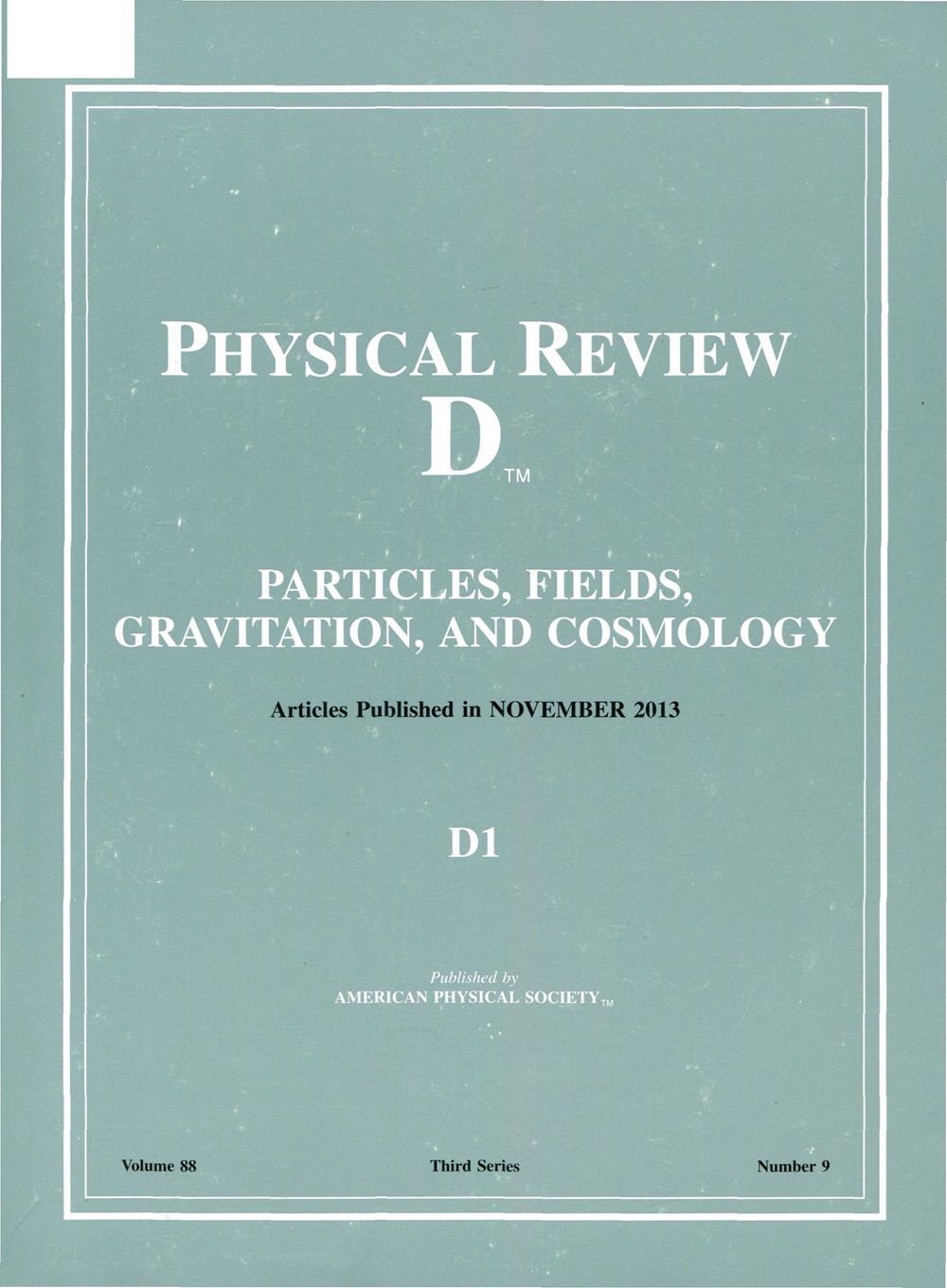Testing the RG running of the leptonic Dirac CP phase with reactor neutrinos
IF 5.3
2区 物理与天体物理
Q1 Physics and Astronomy
引用次数: 0
Abstract
We propose the possibility of using the near detector at reactor neutrino experiments to probe the renormalization group (RG) running effect on the leptonic Dirac CP phase用反应堆中微子测试轻子狄拉克CP相的RG运行
我们提出了在反应堆中微子实验中使用近探测器来探测重整化群(RG)运行对轻子狄拉克CP相δD的影响的可能性。反应堆中微子振荡虽然不能直接测量δD,但可以探测到RG运行引起的偏差Δδ≡δD(Qd2)−δD(Qp2)。作为一个关键因素,在中微子产生(Qp2)和探测(Qd2)过程中的不匹配动量转移可以相差两个数量级。我们用即将到来的泰山反中微子天文台(TAO,也称为JUNO-TAO)实验来说明这一概念,并获得了运行β函数βδ的CP RG的投影灵敏度。2025年由美国物理学会出版
本文章由计算机程序翻译,如有差异,请以英文原文为准。
求助全文
约1分钟内获得全文
求助全文
来源期刊

Physical Review D
物理-天文与天体物理
CiteScore
9.20
自引率
36.00%
发文量
0
审稿时长
2 months
期刊介绍:
Physical Review D (PRD) is a leading journal in elementary particle physics, field theory, gravitation, and cosmology and is one of the top-cited journals in high-energy physics.
PRD covers experimental and theoretical results in all aspects of particle physics, field theory, gravitation and cosmology, including:
Particle physics experiments,
Electroweak interactions,
Strong interactions,
Lattice field theories, lattice QCD,
Beyond the standard model physics,
Phenomenological aspects of field theory, general methods,
Gravity, cosmology, cosmic rays,
Astrophysics and astroparticle physics,
General relativity,
Formal aspects of field theory, field theory in curved space,
String theory, quantum gravity, gauge/gravity duality.
 求助内容:
求助内容: 应助结果提醒方式:
应助结果提醒方式:


